“Hello Possums” – most older Australians would smile when they hear this boisterous greeting, uttered by Dame Edna Everage, the comedic “wisteria hue” hair and “cat eye glasses” wearing alter-ego of Barry Humphries.
Yet, few Australians will feel the same about having a possum living in their roof. Possums are very timid, especially when disturbed from sleep during the day. Dame Edna’s greeting no doubt would see the poor creatures scurrying.
Houston We Have a Possum
Many Australians see the common brush-tail possum as a pest. We see them as ‘invading’ our houses when in fact, with urban development we have invaded their habitat. Hearing them scuttling through our roof spaces is often time when residents will call a possum catcher. Possum catchers will come and remove animals from your roof cavity, they will repair or block the point/s of entry to prevent them returning. Possums are territorial and are by QLD law required to relocated nearby, as RSPCA states:
Relocators must release possums within 25 metres of the point of capture to ensure that an animal is not released into another possum’s home range. Possums are less likely to survive if they are released into a new area where they do not have access to a den or must compete with a neighbouring possum for den space.
Home Sweet Hollow
As the RSPCA fact sheet continues:
Blocking the possum’s entry to the roof should be done in conjunction with erecting a nesting box nearby to give the possum a chance to find alternative shelter.
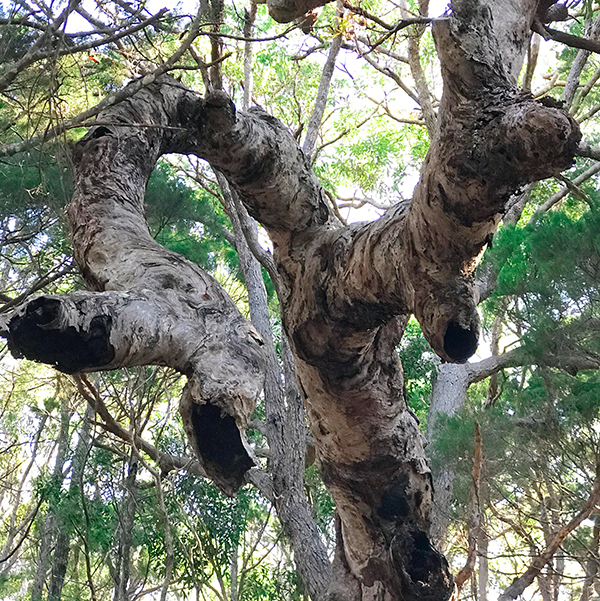
Trees may take over 100 years to form hollows and are home to over 100 species. In our urban environment this can mean a housing crisis for our wildlife.
Housing Shortage
Without providing the possum with an alternative den then it will less likely survive as it may have to compete with den space with surrounding possums. This housing shortage has come about because of the removal of old trees.
Old trees often contain hollows. These are critical for over 100 species of wildlife in Australia, and with urban development, competition for hollows is intense.
Location Location Location
The intense heat of your ceiling cavity isn’t ideal for a possum. It may be dark, but the heat can severely dehydrate them. When relocating a possum and installing a ‘possum box’ look for a tree that has lots of branches and leaves to provide shade and isn’t exposed so to provide a great hiding place from predators.
Possum Perspective
Think about it from a possum’s perspective. You need a cool, dark and safe place to sleep in the day. You are arboreal (tree-dwelling ) so want to be able to have easy access to the den where you can be on the ground as little time as possible.
Where would you want your bedroom located?
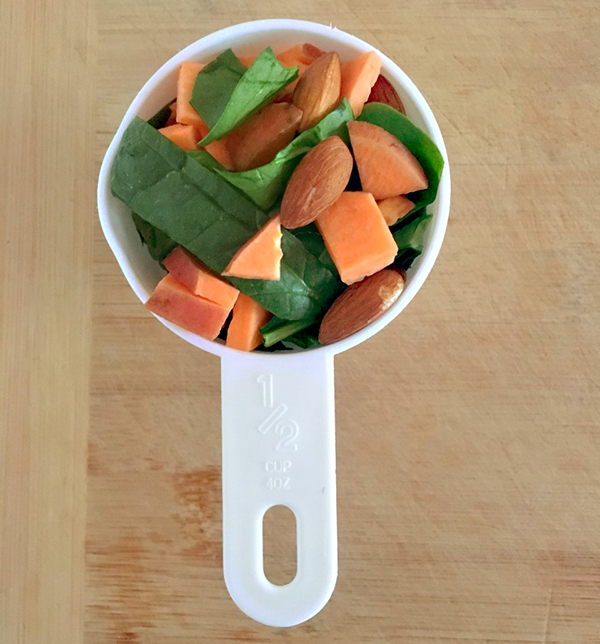
If you do feed possums don’t feed them more than 3 times a week and only give them half a cup of sweet potato, baby spinach and almonds. If the native vegetation is poor because of drought then no more than 4 times per week.
Desperate Times
We have seen over the years possums living in gutters or squeezing themselves through tiny entry points into roof cavities and even vehicles looking for somewhere safe and dark to sleep.
How To Help Our Possums
Some simple things you can do to help our possums are:
• install possum boxes in your backyard to ensure that they have somewhere safe to sleep.
• plant a ‘possum garden’, that is native plants that possum like. A little bit of research will bring up a range of plants from shrubs to large trees that grow in your area.
The video below is an orphaned possum that as wildlife carers we raised to a size that he could be released, and shows a variety of the native plants that are in a brushtail possum’s diet.
• wherever possible don’t remove old trees. It takes over 100 years for them to develop hollows that are used by possums and other wildlife.
• an alternative to removing an old tree that may not be healthy is to bring in a company such as Habitec that can keep the tree, remove any sick limbs that may fall, and create artificial hollows in the tree!
• tempting as it may be, regularly feeding possums habituates them to relying on you. They are wild animals, and it is important For them to keep their nature survival instincts. Regular feeding may also cause health issues, and we may in fact be doing more harm by killing them with what we percieve as kindness. It may also attract other possums and subsequent fights which may cause injury.
• if you cannot resist occasionally feeding them, do not give them fruit or bread as this can make them sick. We have had so many call-outs for possums with severe dermatitis which look like burns, as the fur falls off to reveal pink skin. Many of these possums had to be euthanised.
Feeding possums fruit and bread is like continually feeding on sweets, they may taste good but are not good for us. These foods compromise a possum’s immunity so much so that when they get into a fight with each other, the wounds don’t heal.
• if you do occasionally feed them instead provide them with sweet potato that has been chopped up into tiny pieces, chopped baby spinach and almonds.
• Offer food for possums at high locations, away from pets and predators. Place in a feeding station in a tree or place on a branch and provide water in drought conditions.
• Avoid using poisons such as rat bait and snail bait – both of which can be fatal to brushtail possums.
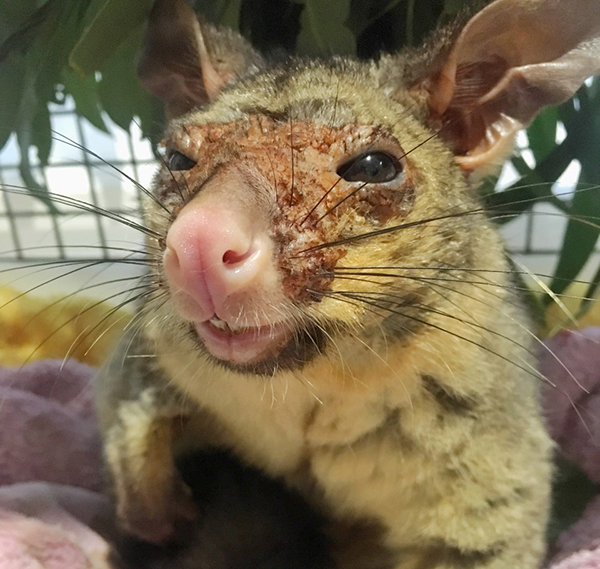
This possum is suffering from dermatitis. This painful condition can be fatal and often severe cases have to be euthanised as it is the only humane thing left to do. Often when we feed possums it attracts other possums and they fight. When their immune system is compromised because they are fed an incorrect diet their wounds often don’t heal. We can kill our wildlife through misguided acts of kindness. Through awareness and education we can ensure the future of our urban possums.
Hollow Possums!
Hollows are in short supply and they take a long time for a tree to form them naturally.
With you awareness and understanding we can help our possums and other native wildlife to thrive in our suburbs.

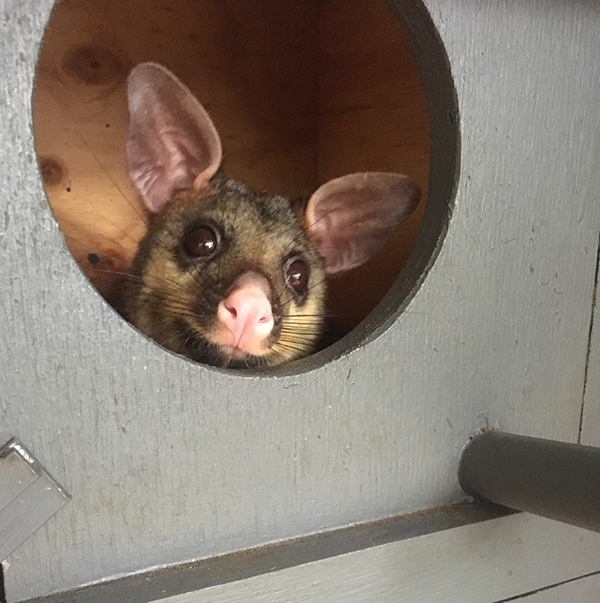
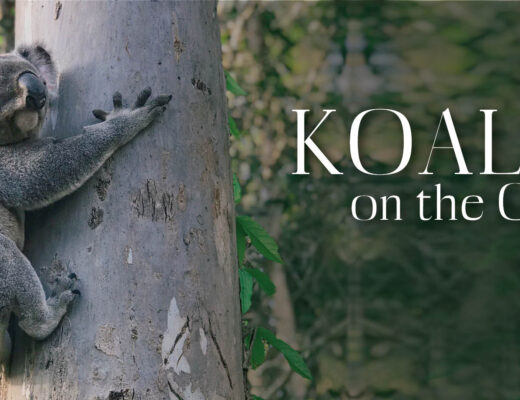
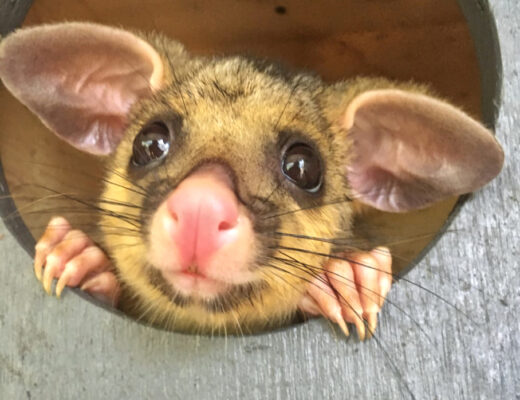
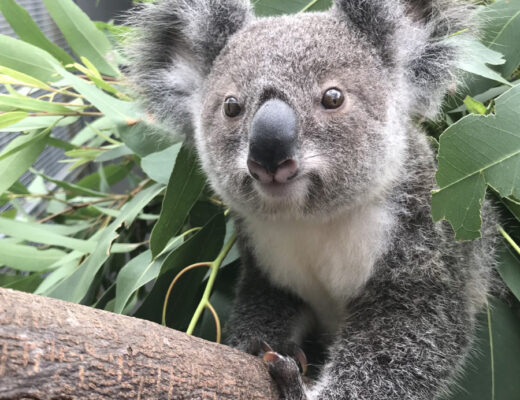
No Comments